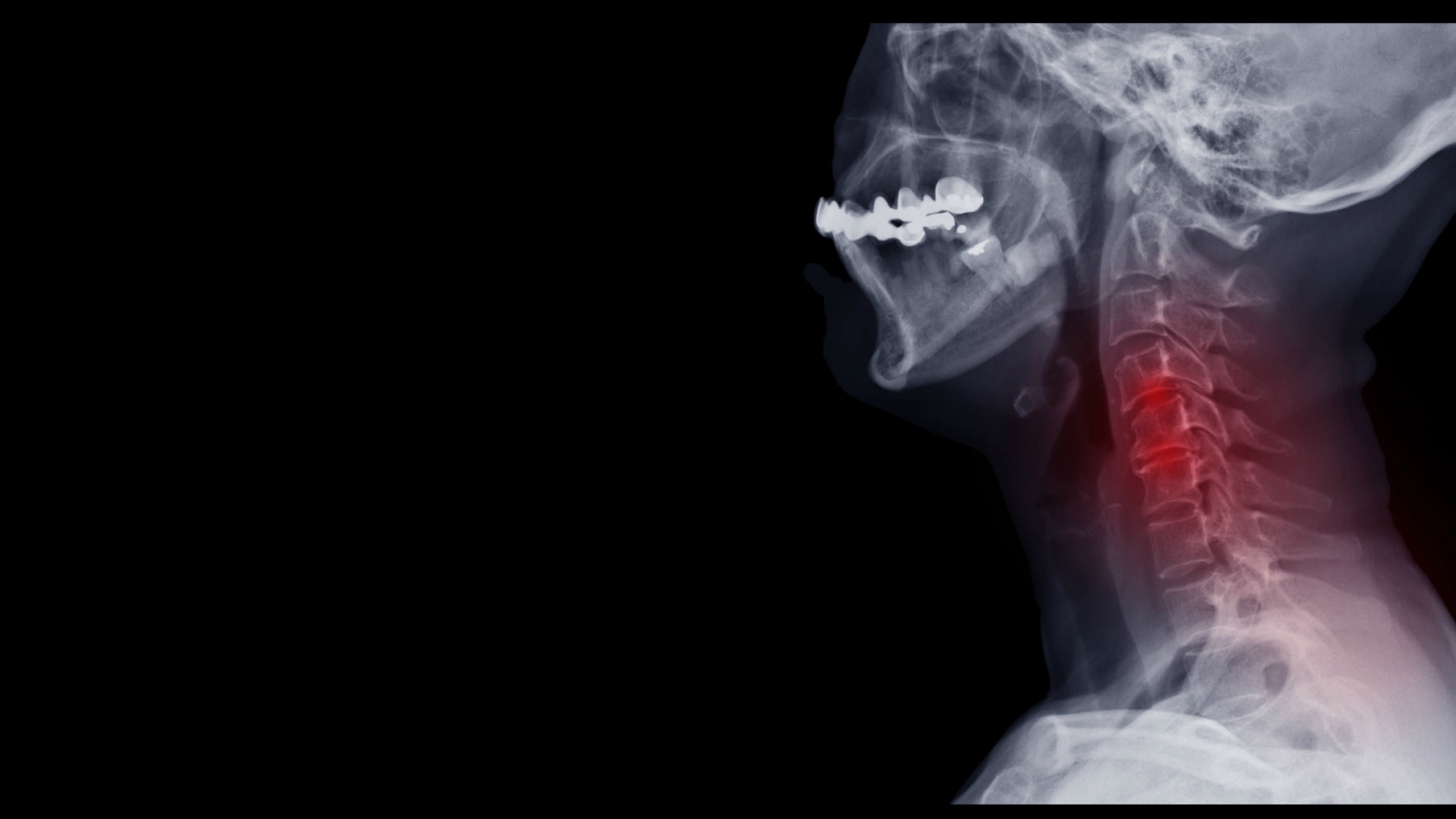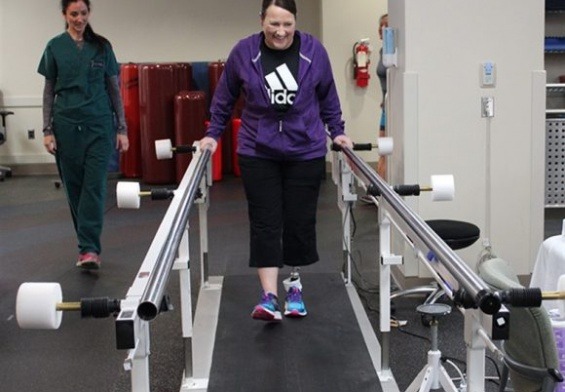Cervical spine deformities, a group of conditions that distort the normal curvature of the neck, have been a subject of extensive research due to their significant impact on patients’ quality of life. These deformities can arise from a variety of factors, including genetic predispositions, aging, and post-surgical complications. This article aims to delve into the intricate world of cervical spine deformities, exploring the genetic factors contributing to their development, their impact on patients’ quality of life, and the advanced techniques employed to prevent cervical spine deformity following spine surgery.
The cervical spine, or the neck, is a complex structure made up of seven vertebrae, intervertebral discs, muscles, and ligaments. It plays a crucial role in supporting the head, allowing for its movement, and protecting the spinal cord. Any deformities in this region can lead to a range of symptoms, from mild discomfort to severe pain and disability. The causes of these deformities are diverse, ranging from congenital conditions and genetic factors to degenerative diseases and injuries.
Genetic factors are increasingly being recognized as significant contributors to the development of cervical spine deformities. Advances in genetic research have allowed scientists to identify specific genetic markers and mutations associated with these conditions. This has opened up new avenues for understanding the underlying mechanisms of these deformities and developing targeted treatment strategies.
Aging is another major factor contributing to the development of cervical spine deformities. As we age, the structures of our spine, including the vertebrae and intervertebral discs, undergo changes that can lead to deformities. For instance, the discs may lose their elasticity and height over time, leading to conditions such as degenerative disc disease. Similarly, the ligaments of the spine may become stiff and thickened, causing the spine to lose its normal curvature.
Post-surgical complications can also lead to cervical spine deformities. While spine surgery can be highly effective in treating a range of spinal conditions, it can sometimes lead to changes in the biomechanics of the spine, resulting in deformities. This highlights the importance of careful surgical planning and the use of advanced surgical techniques to minimize the risk of these complications.
In this article, we will delve deeper into these aspects, shedding light on the complex world of cervical spine deformities. We will explore the latest research on the genetic factors contributing to these conditions, discuss their impact on patients’ quality of life, and examine the techniques employed to prevent cervical spine deformity following spine surgery. Through this exploration, we aim to provide a comprehensive overview of cervical spine deformities, offering insights into their causes, impacts, and management.
Genetic Factors in Cervical Spine Deformity
The role of genetics in the development of cervical spine deformities has been increasingly recognized. A systematic review published in the Journal of Personalized Medicine provides a comprehensive overview of the genetic factors associated with these deformities. The study highlights that certain genetic markers and mutations are associated with the onset of these deformities.
For instance, conditions such as degenerative disc disease, a common ailment treated at New Jersey Spine Specialists, can be influenced by genetic factors. The study further emphasizes the importance of genetic research in understanding and managing cervical spine deformities. This understanding can help clinicians predict the risk of developing cervical spine deformities and inform personalized treatment plans, thereby paving the way for precision medicine in spine health.
Genetics play a crucial role in the development and progression of cervical spine deformities. The human genome is a complex network of genes, each with a specific function. Some of these genes are responsible for the development and maintenance of the skeletal system, including the spine. Mutations or variations in these genes can lead to abnormalities in the structure and function of the spine, resulting in conditions such as cervical spine deformities.
One of the key findings of the study published in the Journal of Personalized Medicine is the association between certain genetic markers and the onset of cervical spine deformities. These genetic markers, also known as genetic variants, are changes in the DNA sequence that can affect how genes function. Some of these variants are associated with an increased risk of developing cervical spine deformities.
For example, the study found that individuals with a variant in the COL1A1 gene, which codes for a type of collagen found in the spinal discs, were more likely to develop degenerative disc disease. This condition, characterized by the breakdown of the discs between the vertebrae, is a common cause of neck pain and can lead to cervical spine deformities if left untreated.
In addition to degenerative disc disease, other spinal conditions treated at New Jersey Spine Specialists, such as herniated discs and spinal stenosis, can also be influenced by genetic factors. For instance, variations in the genes that regulate the production of cartilage, a key component of the spinal discs, can increase the risk of disc herniation. Similarly, genetic factors can influence the development of spinal stenosis, a condition characterized by the narrowing of the spinal canal.
The study’s findings underscore the importance of genetic research in understanding and managing cervical spine deformities. By identifying the genetic factors that contribute to these conditions, researchers can develop more effective treatment strategies. For instance, individuals with a high genetic risk of developing cervical spine deformities could be monitored more closely for early signs of these conditions. Similarly, treatments could be tailored to the individual’s genetic profile, improving their effectiveness and reducing the risk of side effects.
This personalized approach to treatment, known as precision medicine, is a rapidly growing field in healthcare. By taking into account individual differences in genes, environment, and lifestyle, precision medicine allows doctors to predict more accurately which treatment and prevention strategies will work in specific patients. In the context of cervical spine deformities, this could mean the difference between a successful treatment outcome and a lifetime of chronic pain.
In conclusion, the role of genetics in the development of cervical spine deformities is a complex and evolving field. While much progress has been made in identifying the genetic factors that contribute to these conditions, much work remains to be done. As our understanding of the genetic underpinnings of cervical spine deformities continues to grow, it is hoped that this knowledge will lead to more effective and personalized treatment strategies, ultimately improving the quality of life for individuals affected by these conditions.
Impact of Cervical Spine Deformity on Quality of Life
The impact of cervical spine deformities extends beyond physical health, significantly affecting patients’ quality of life. A study published in The Spine Journal compared the health-related quality of life between symptomatic patients with and without cervical spine deformity. The study found that patients with cervical spine deformity reported lower quality of life scores, demonstrating the profound impact of this condition.
Conditions such as bulging discs, sciatica, and spinal stenosis, which are commonly treated at New Jersey Spine Specialists, can contribute to cervical spine deformity and subsequently affect quality of life. These conditions can cause pain, restrict mobility, and degrade the quality of life, underscoring the need for effective management strategies.
The impact of cervical spine deformities on quality of life is multifaceted, affecting both physical and psychological well-being. Physically, these conditions can cause chronic pain, limit mobility, and reduce physical function. This can make it difficult for individuals to perform everyday activities, such as lifting objects, bending, or even walking. Over time, this can lead to a decrease in physical fitness and overall health.
Psychologically, the chronic pain and physical limitations associated with cervical spine deformities can lead to feelings of frustration, depression, and anxiety. Individuals may feel isolated or misunderstood, particularly if their condition is not visible to others. They may also experience fear and uncertainty about the future, particularly if their condition is progressive or if treatment options are limited.
The study published in The Spine Journal provides valuable insights into the impact of cervical spine deformities on quality of life. By comparing the health-related quality of life scores of symptomatic patients with and without cervical spine deformity, the researchers were able to quantify the impact of these conditions. The findings underscore the importance of considering quality of life in the management of cervical spine deformities, in addition to physical health outcomes.
The study also highlights the importance of effective management strategies for conditions that can contribute to cervical spine deformity, such as bulging discs, sciatica, and spinal stenosis. These conditions, which are commonly treated at New Jersey Spine Specialists, can cause significant pain and disability. Effective treatment can not only alleviate these symptoms but also prevent the development of cervical spine deformities, thereby improving quality of life.
Prevention Techniques for Cervical Spine Deformity After Spine Surgery
Preventing cervical spine deformity after spine surgery is crucial for maintaining patients’ quality of life. A narrative review in the Journal of Spine Surgery outlined various concepts and techniques to prevent cervical spine deformity post-surgery. These techniques include careful patient selection, meticulous surgical planning, and the use of modern surgical techniques.
For conditions like pinched nerves, which can result from spinal deformities and are treated at New Jersey Spine Specialists, these preventative measures can be particularly beneficial. The review emphasizes the importance of these techniques in preventing the development of cervical spine deformity and improving patients’ quality of life.
Spine surgery is a complex procedure that requires careful planning and execution to ensure the best possible outcome. One of the key challenges is preventing the development of cervical spine deformity after surgery. This can occur as a result of changes in the biomechanics of the spine following surgery, such as changes in the alignment of the vertebrae or the loss of spinal stability.
The review published in the Journal of Spine Surgery provides a comprehensive overview of the strategies and techniques that can be used to prevent cervical spine deformity after spine surgery. These include careful patient selection, meticulous surgical planning, and the use of modern surgical techniques.
Patient selection is a crucial first step in preventing cervical spine deformity after spine surgery. Not all patients are suitable candidates for spine surgery, and some may be at higher risk of developing cervical spine deformity after surgery. Factors that can increase this risk include age, overall health status, and the presence of certain conditions, such as osteoporosis or degenerative disc disease. By carefully evaluating each patient’s individual risk factors, surgeons can identify those who are most likely to benefit from surgery and those who may be at risk of complications.
Meticulous surgical planning is another key factor in preventing cervical spine deformity after surgery. This involves a detailed assessment of the patient’s spine, including the alignment of the vertebrae and the condition of the spinal discs and other structures. Based on this assessment, the surgeon can develop a surgical plan that minimizes the risk of cervical spine deformity. This might involve the use of specific surgical techniques, such as minimally invasive surgery, or the use of devices to stabilize the spine.
The use of modern surgical techniques is also crucial in preventing cervical spine deformity after spine surgery. Advances in surgical technology and techniques have made it possible to perform spine surgery with greater precision and less trauma to the surrounding tissues. This can reduce the risk of complications, including cervical spine deformity. For example, minimally invasive surgical techniques, which involve making smaller incisions and using specialized instruments, can reduce damage to the muscles and other structures around the spine, reducing the risk of cervical spine deformity.
Conclusion
Cervical spine deformity is a complex condition with multifactorial causes, including genetic factors, and can significantly impact patients’ quality of life. Advanced techniques can help prevent cervical spine deformity after spine surgery, improving patient outcomes. As our understanding of this condition continues to grow, it is hoped that future research and clinical practice will lead to improved prevention and treatment strategies, ultimately enhancing the quality of life for patients with cervical spine deformity.
In the realm of medical science, the complexity of cervical spine deformities presents both a challenge and an opportunity. The challenge lies in the multifaceted nature of these conditions, which can be influenced by a range of factors from genetic predispositions to post-surgical complications. However, the opportunity lies in our growing understanding of these factors and how they interact, which opens up new possibilities for prevention, treatment, and management.
The role of genetics in cervical spine deformities, for instance, is a burgeoning field of study. As we continue to unravel the genetic markers and mutations associated with these conditions, we move closer to a future where personalized medicine is the norm. In this future, clinicians could predict an individual’s risk of developing cervical spine deformities based on their genetic profile and tailor treatment plans accordingly. This could significantly improve patient outcomes and pave the way for more effective, targeted treatments.
Similarly, our understanding of the impact of cervical spine deformities on quality of life underscores the importance of a holistic approach to treatment. It’s not enough to simply address the physical symptoms of these conditions; we must also consider how they affect patients’ psychological well-being and overall quality of life. This understanding informs the development of comprehensive management strategies that address both the physical and psychological aspects of cervical spine deformities.
The prevention of cervical spine deformity following spine surgery is another crucial area of focus. The development of advanced surgical techniques and strategies for patient selection and surgical planning are significant steps forward in this regard. These advancements not only improve patient outcomes but also contribute to the prevention of cervical spine deformity, further underscoring the importance of ongoing research and innovation in this field.
In conclusion, while cervical spine deformity is a complex and challenging condition, the future holds much promise. As we continue to deepen our understanding of this condition and refine our approaches to treatment and prevention, we move closer to a future where the quality of life for patients with cervical spine deformity is significantly improved. The journey is ongoing, but with each step forward, we come closer to turning this vision into a reality.
References




